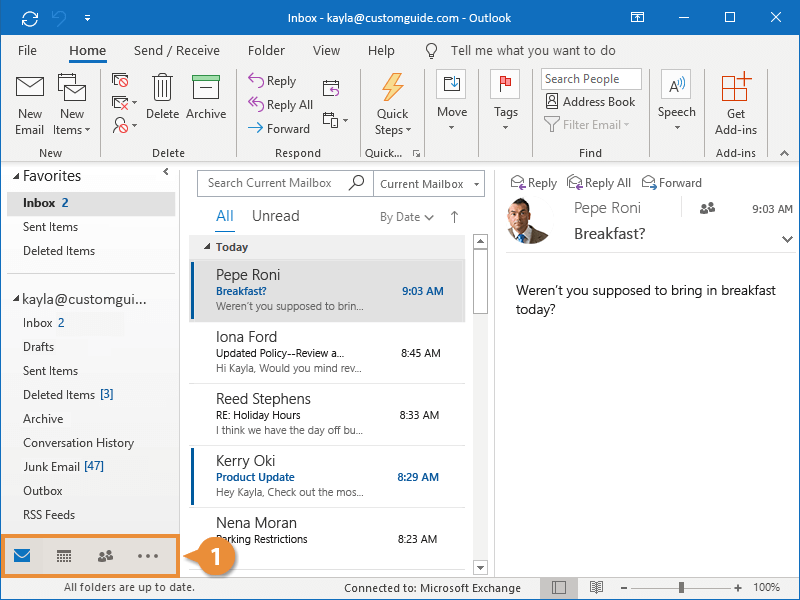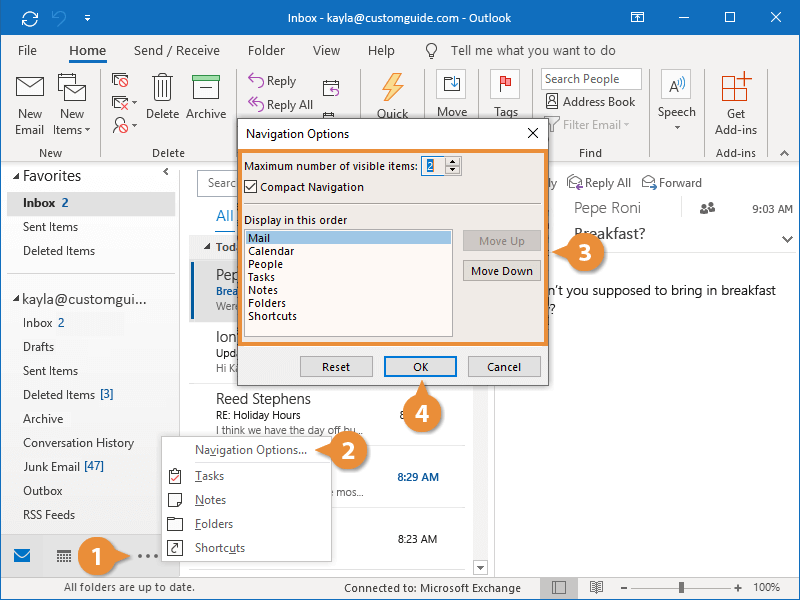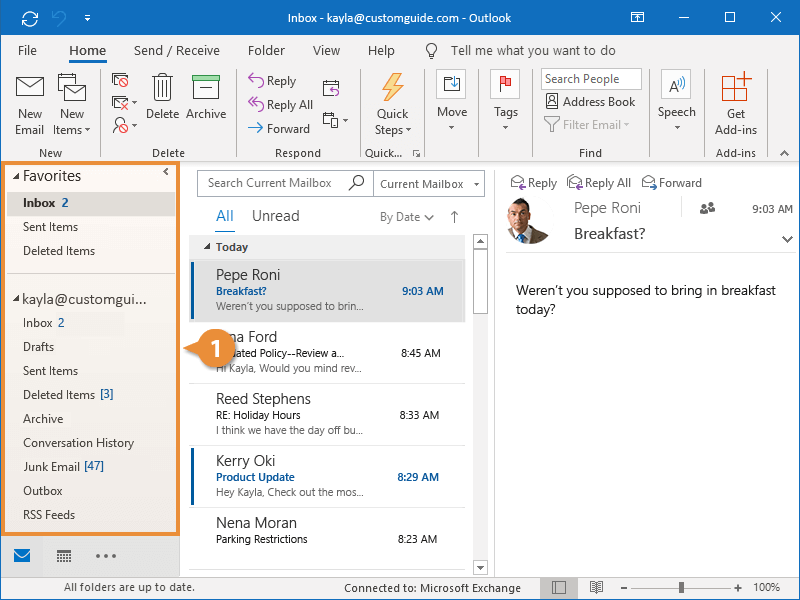While Outlook displays your Mail by default, you can easily switch the view over to other information, like your Calendar, People, or Tasks.
The Navigation Bar at the bottom of the screen links to the other parts of Outlook, and the currently active screen appears in blue.
- Click a link on the Navigation Bar to switch views.
- Mail: View your inbox, read and compose emails.
- Calendar: View your current calendar, create and edit events.
- People: Search, view, and edit your contacts.
- More (•••): Contains additional Outlook views, such as Notes, Folders and Shortcuts, as well as Navigation Options.
The Navigation Bar normally displays large text buttons for Mail, Calendar, People, and Tasks, but you can customize it to make it work for you.
- Click the More button.
- Select Navigation Options.
- Make changes to the Navigation Bar.
- Change how many links appear.
- Reorder the links.
- (Optional) Choose to compact the Navigation Bar.
- Click OK.
In addition to using the Navigation Bar, you can also use the Folder Pane on the left side of the Outlook window to navigate to the different folders in Outlook.
- Click any folder in the Folder Pane.
Outlook opens the folder that you selected.
| Folder Pane |
| Favorites |
Add frequently used folders here for quick access. |
| Inbox |
Contains all your recent incoming email messages. |
| Drafts |
Stores draft messages that you haven’t yet completed or sent. |
| Sent Items |
Stores copies of messages you have sent. |
| Deleted Items |
Works like the Windows Recycle Bin, where you can find deleted Outlook items. |
| Outbox |
Temporarily stores any messages that you’ve composed and prompted to send, but have not been sent yet. Messages can appear here if you’re experiencing a connectivity issue. |
| Junk Email |
Contains messages that Outlook considers spam. You should check this folder periodically to check for incorrectly flagged messages. |
| RSS Subscriptions |
Allows you to access content that you’ve subscribed to via RSS feed, such as news and blogs. |
| Search Folders |
Provides quick access to color categorized messages, messages flagged for follow-up, messages with large attachments, and unread messages. |
In Outlook, an item is the basic element that holds information, such as an email message or calendar event. Items are used to send and view emails and organize information, such as tasks and contacts.
| Outlook Items |
 |
Email Message |
Compose an email. |
 |
Appointment |
Add an appointment to your calendar. |
 |
Meeting |
Schedule and invite others to an appointment, or reserve resources such as a conference room. |
 |
Contact |
Enter information about a person, including their name, company, job title, and email address. |
 |
Group |
Create a collection of contacts that allows you to quickly send mass emails. |
 |
Task |
Enter to-do items that can be tracked until completion. |









